
The monkey goby is a species of goby native to the basins of the Black Sea and the Sea of Azov.

The racer goby is a species of goby native to fresh, sometimes brackish, waters, of the Black Sea basin. It is a Ponto-Caspian relict species. The species is placed a monotypic genus, Babka, which was once considered a subgenus of genus Neogobius, but was then elevated to genus-status based on the molecular analysis.

The tadpole-gobies (Benthophilus), also called pugolovkas, are a genus of Ponto-Caspian fishes in the family Gobiidae.

The stellate tadpole-goby is a species of gobiid fish native to the basin of the Sea of Azov where it occurs in the Gulf of Taganrog and limans of the eastern coast. It also lives in the lower Don River up to the Tsimlyansk Reservoir. It occurs in fresh and brackish waters of depths greater than 3 metres (9.8 ft), preferring shallow coastal lagoons and lowland rivers. Males can reach a length of 13.5 centimetres (5.3 in) TL while females only reach 11 centimetres (4.3 in) TL.

The grass goby is a species of goby native to the Mediterranean Sea, the Sea of Azov and the Black Sea. It is currently the only known member of its genus.

The Black Sea tadpole-goby is a species of goby native to the basin of the Black Sea. Found in the Gulf of Tendra and limans of the north-western Black Sea, lakes of the Danube Delta. In the rivers of the Black Sea basin: Danube up to Iron Gate dam, Dniester up to Tighina, Dnieper up to Kyiv, Southern Bug. This species is mostly a denizen of fresh and slightly brackish bodies of water, preferring rivers and deltas, limans and coastal lakes. This fish can reach a length of 15 centimetres (5.9 in) TL.

The Benthophilinae are a subfamily of gobies endemic to the Ponto-Caspian region. The subfamily includes about 50 species. The representatives of the subfamily have fused pelvic fins and elongated dorsal and anal fins. They are distinguished from the closely related subfamily Gobiinae by the absence of a swimbladder in adults and location of the uppermost rays of the pectoral fins within the fin membrane.

The Don tadpole-goby is a species of goby widespread in the basin of the Sea of Azov, specifically in the lower Don River and Tsimlyansk Reservoir. This species is found in rivers, reservoirs and river mouths, but is not known to enter seas. It is introduced and invasive upstream the Volga River, e.g. the Kuibyshev Reservoir. This fish can reach a length of 6.6 centimetres (2.6 in) SL. Life span is about one year.

The Caspian tadpole goby is a species of goby which is widespread in the basin of the Caspian Sea, specifically in the near-estuary zone of the rivers and in small bays. It is a common species in the Volga River delta near Astrakhan, occurred in the deltas of rivers Terek, Ural, Samur. During the warmer months, this species prefers to live at depths of from .5 to 10 metres, moving in the colder months to depths of 20 to 25 metres. It can reach a length of 11.6 centimetres (4.6 in) TL.

The granular pugolovka is a species of gobiid fish widespread in the Caspian Sea. It is a small fish, with a length up to 5.6 centimetres (2.2 in) TL. It was listed as Least Concern by the IUCN in 2008: there are no known major threats. Granular pugolovkas are very abundant in their habitat due to their size and lack of natural predators. The common name 'pugolovka' is a Ukrainian word for tadpole.

The small-spine tadpole-goby is a species of goby, a small fish native to the eastern coasts of the Caspian Sea and the lower reaches of the Volga River up to Volgograd. In the sea it is recorded from the Cape Peschany to the Çeleken Peninsula and Ogurja Ada Island in the south. It is abundant the Volga River delta. This species can be found at depths down to 50 metres (160 ft) although the adults generally are not found deeper than 11 metres (36 ft). This species can reach a length of 6.6 centimetres (2.6 in) TL. The specific name honours the Azerbaijani ichthyologist A. A. Mahmudbekov, studied the fish of the Caspian Sea for much of his life.
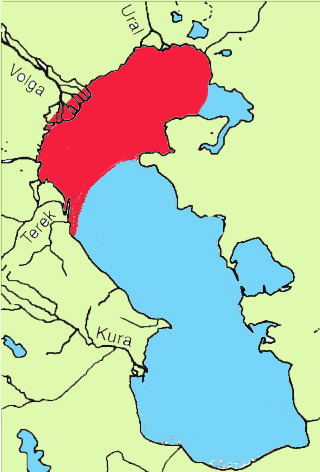
Abdurahmanov's pugolovka is a brackishwater fish of family Gobiidae. It is found in the northern Caspian Sea and the lower reaches of the rivers Volga and Terek. FishBase treats this taxa as a subspecies of the Azov tadpole goby (Benthophilus magistri abdurahmanovi.

The Baer pugolovka is a species of goby widespread in the southern and central Caspian Sea, to Lenkoran in south. Also near the Chechen Island, Tyuleniy Islands, and in Bakhtemirovskaya Borozdina in north. This species occurs at depths of from 15 to 81 metres. Males can reach a length of 8 centimetres (3.1 in) TL while females only reach 6 centimetres (2.4 in) TL.

The Caspian stellate tadpole-goby, also known as the starry goby, is a species of gobiid fish endemic to the Caspian Sea basin. It is widespread along all coasts of the Caspian Sea with exception of the central-eastern, and in the lowest part of the Volga River. In the southern part of the basin, it is mentioned near the Ogurja Ada, in the Gorgansky Bay, and in the Sefīd-Rūd River. This species can reach a length of 10 centimetres (3.9 in) SL.
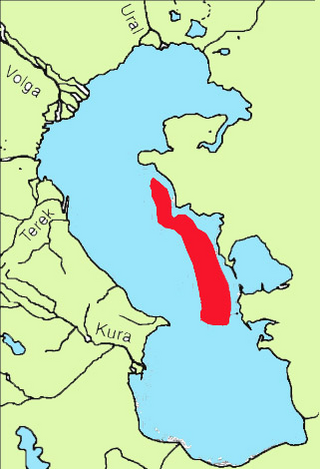
Benthophilus svetovidovi is a species of goby native to the eastern coasts of the Caspian Sea: near the capes Sagandyk, Melovyi, Peschany, Karasyngyr, off Türkmenbaşy, probably near Ogurja Ada.
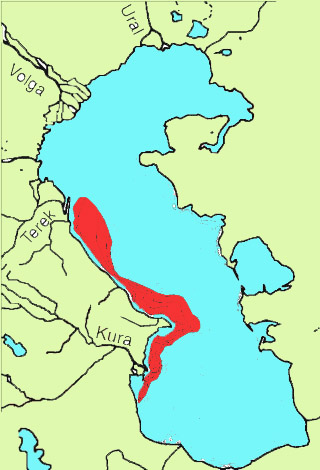
Benthophilus ragimovi is a deepwater species of gobiid fish found along the western coasts of the Caspian Sea, from the Chechen Island to Astara, Azerbaijan. It is one of the numerous species of benthophiline gobies endemic to the Ponto-Caspian region.

Benthophilus casachicus is a species of goby widespread along the eastern coasts of the Caspian Sea from the Cape Pischanyi to Ogurja Ada at south, also near Astrakhan. This species prefers estuaries and coastal waters. This species can reach a length of 7.6 centimetres (3.0 in) TL.
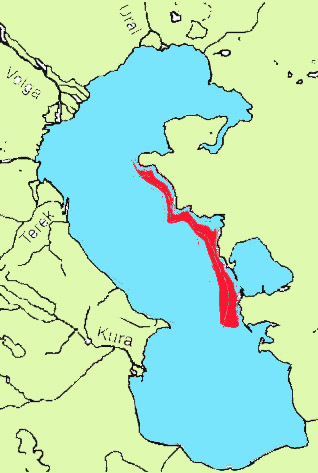
Benthophilus kessleri is a species of goby widespread along the eastern coasts of the Caspian Sea from the Urdyuk Cape to Kuuli Cape and Türkmenbaşy at south. This species occurs at depths of from 65 to 75 metres. It can reach a length of 4.6 centimetres (1.8 in) TL. The specific name honours the German-Russian zoologist Karl Fedorovich Kessler (1815-1881).
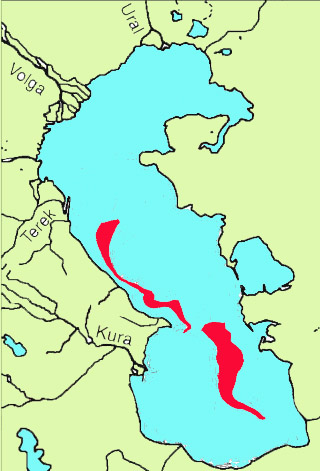
Benthophilus leptocephalus is a deepwater species of goby widespread along the central Caspian Sea from the mouth of the Samur River to Türkmenbaşy and Hasan-Kuli. This species can reach a length of 5.4 centimetres (2.1 in) TL.
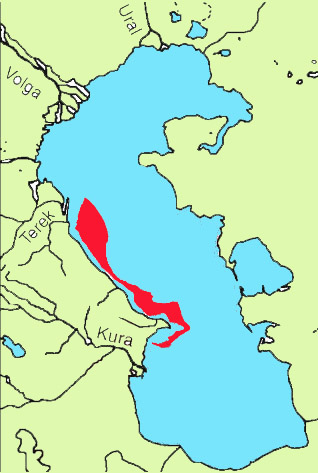
Benthophilus grimmi is a species of goby widespread in the northern Caspian Sea at depth 80 to 240 metres. This species is common from Chechen Island to Absheron Peninsula. This species can reach a length of 9.5 centimetres (3.7 in) TL. The specific name honours the Russian ichthyologist Oscar von Grimm (1845–1921), who was Chief Inspector of Russian Fisheries in the Russian Empire who collected the type specimen.





















